Space Environment
1/19
There's no tags or description
Looks like no tags are added yet.
Name | Mastery | Learn | Test | Matching | Spaced |
|---|
No study sessions yet.
20 Terms
Fiels and Particles in Interplanetary Space Environment
Fields:
solar gravitational field (and of other planets)
solar magnetic fields
Particles:
the solar wind
solar electrons and protons
Galactic cosmic rays
Interplanetary material (Comets and asteroids, Gas and dust)
What is the definition of Space Weather ?
Space Weather is an umbrella term for either Solar Weather and/or Cosmic Weather. Usually it is Solar Weather → Solar Weather is the dynamical transfer of energy from the Sun to the Earth in the form of solar photons, charged particles, and fields that vary on multiple time and spatial scales
It affects natural planetary environments (ocean, land, atmosphere, near space) and human technologocal systems (space-based & ground based)
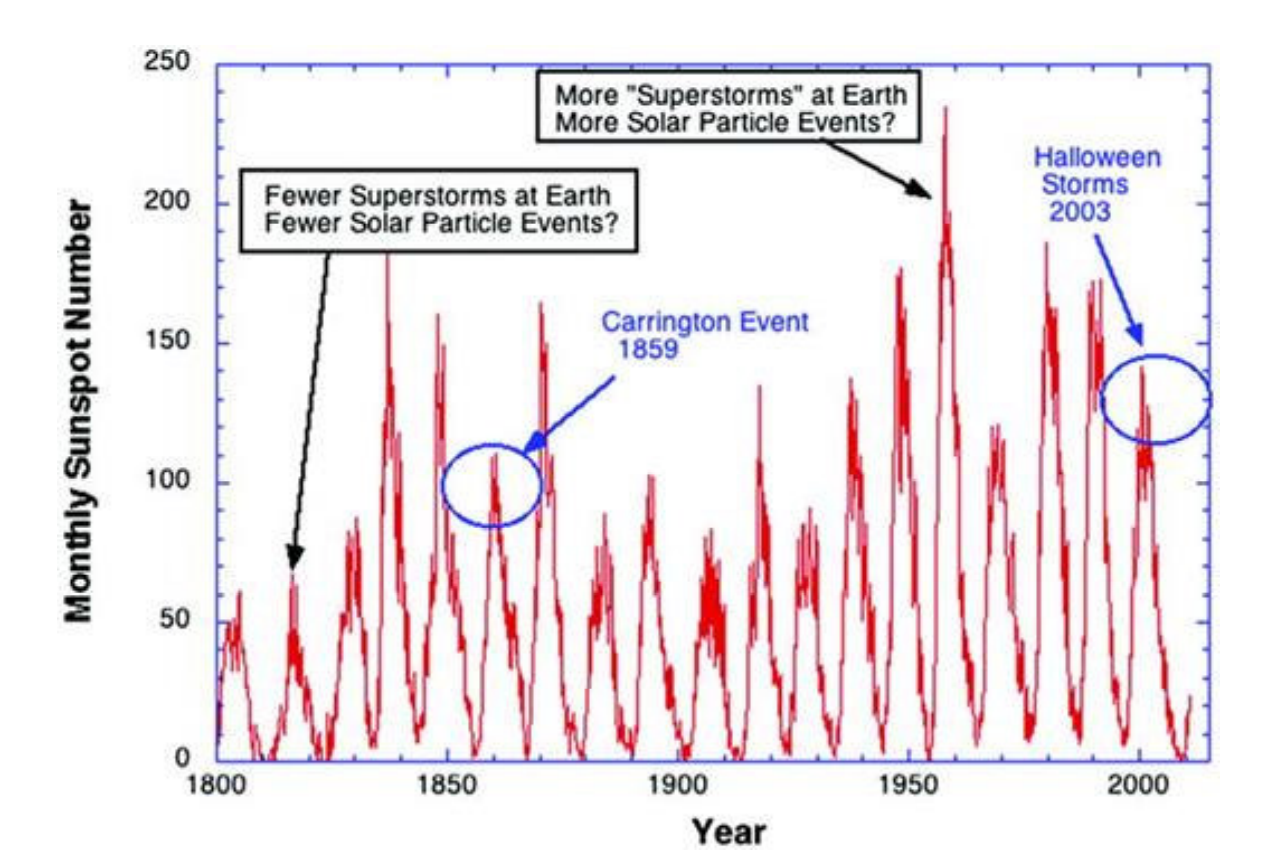
How are Sunspots and Solar Flares formed ? How does coronal mass ejections happen?
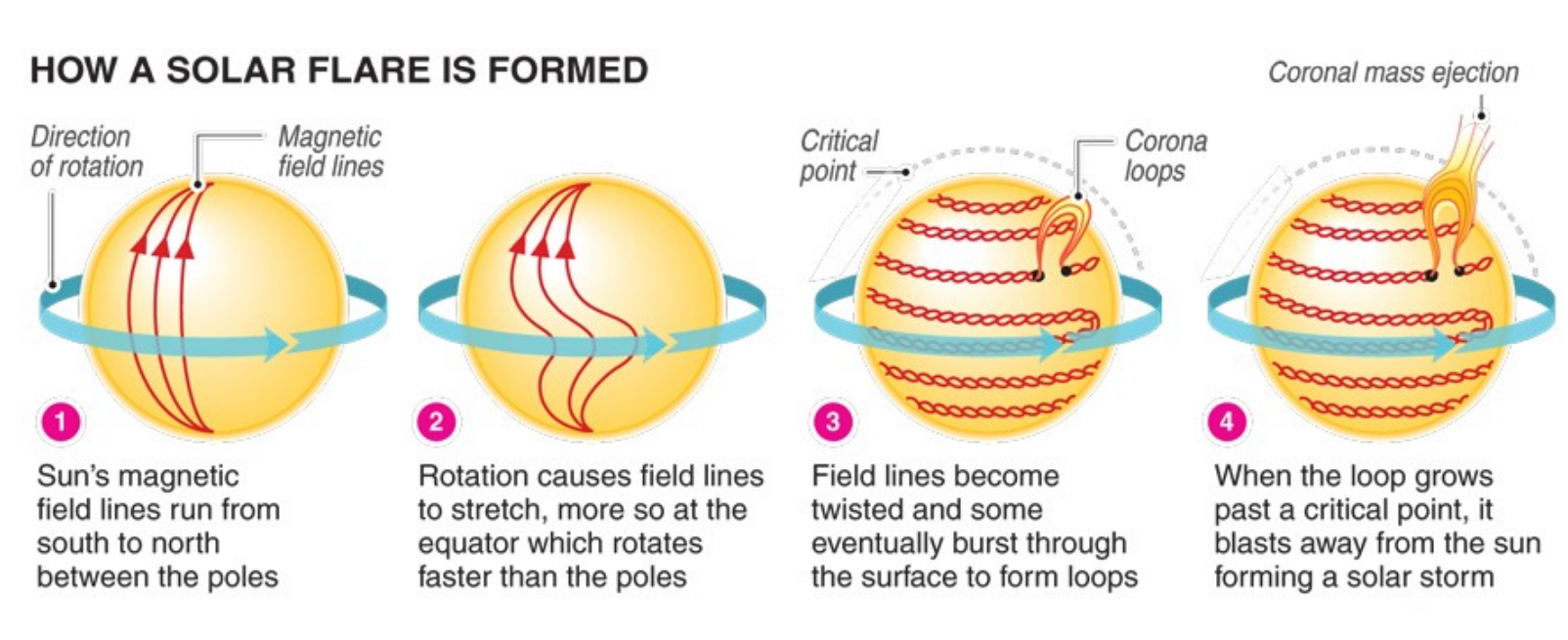
How does Space Weather impact human technologies ?
Aviation – HF communication loss; radiation above 7000 m; GNSS position error
Navigation – GNSS position and timing error
Communication – D-region absorption; HF loss; HF/UHF/L-band radio signal scintillation
Satellite operations – LEO orbit error from drag ; GEO spacecraft charging; SEUs and latchup
Energy production – drill-bit misalignment from magnetometer error in oil/gas drilling
Power grid – transformer loss from surges
Atmospheric Drag resuting from interaction with space weather affects location knowledge → Attitude perturbations affect pointing precision and gas supply
F_{D}=\frac12\cdot\rho\cdot V^2\cdot C_{D}\cdot A
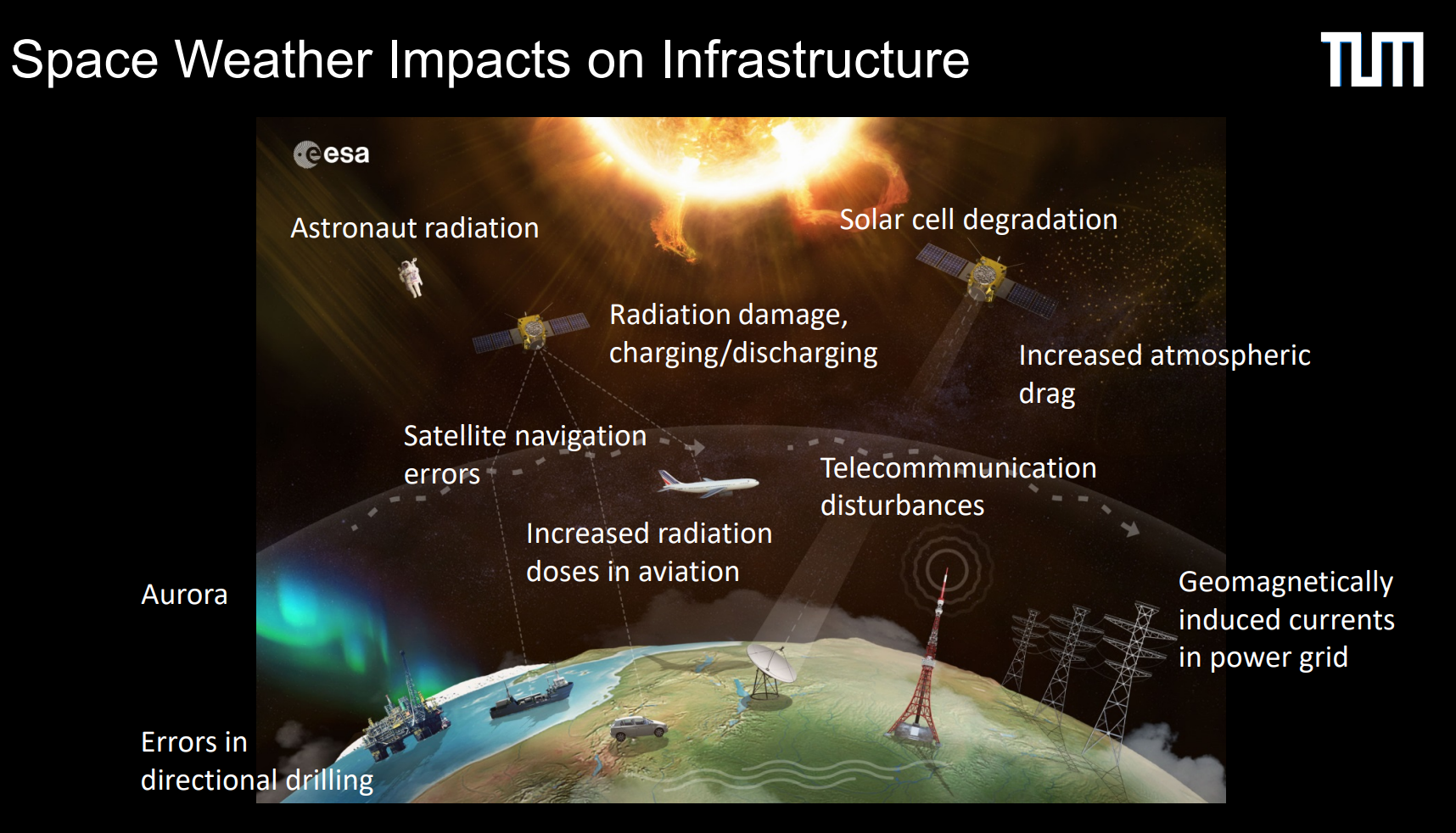
What different forms of Radiation exist & Hoe do they impact us humans on Earth ?
First Prerequisite: Knowledge on ambient high energy (solar) photon, electron, ion, neutron, and (galactic) cosmic ray environment
Galactic cosmic rays and solar energetic protons penetrate into the troposphere causing radiation in aircraft
Van Allen belts (inner, outer, and new) are generally the regions in which Earthorbiting spacecraft encounter the trapped particles while energetic photons can be encountered in any environment
Interplanetary and outer planets (e.g., Jupiter, Saturn) environments have their own radiation environments composed of the same particles/photons
What different units exist for Radiation ?
Gray (Gy): SI Unit; amount of radiation that deposits 1 J/kg in a material
Rad: mount of radiation that deposits 0.01 J/kg of material; 100 Rads =1 Gray
Dose: amount of radiation energy deposited in a material as a function of time
The Total Dose deposited over the life of the material and the rate at which the radiation is deposited (dose rate)´are two of the most important factors in determining radiation damage
What are some characteristics of Radiation ?
Human-produced radiation can achieve high energies of 104-108 eV.
Solar energetic photons (hard X-rays and gamma rays) are generated during powerful solar flares. The energy of photons during solar events can achieve 104-108 eV
Radiation belts (RB), the regions populated with high-energy charged particle fluxes, are located within the dipole structure region of the magnetic field of the Earth and giant-planets. Particle energies can be as high as 109 eV for protons and 107 eV for electrons for extreme conditions
Solar energetic particles (SEPs) are generated during coronal mass ejections and in IMF acceleration shocks. The frequency of such events varies with the solar activity cycle: there are more during the maximum and decline of the solar cycle. The energy of protons and nuclei during solar events can achieve 109-1011 eV.
Galactic cosmic rays can achieve even higher energies - as high as 1021 eV with an abruptly falling energy spectrum.
eV = Measure of amount of kinetic energy gained by a single electron accelerating through an electric potential difference of 1 Volt in vacuum

What are sources of heating and cooling for a spacecraft in space ?
Sun, internal, earth, moon, other planets, atmospheric friction, micrometeorites
Radiation to cooler environment – deep space, other component
How does the thermal conditions in space differ than on the groun
No natural air convection source to conduct heat to or from areas of the spacecraft
Vacuum – extreme, fast temperature variations
Extremes that a spacecraft sees in space
Sunlight vs eclipse
Operation extremes
Calculate the Radiation Intensity from the Sun
H_0=\frac{R_{sun}^2}{D^2}\cdot H_{sun}
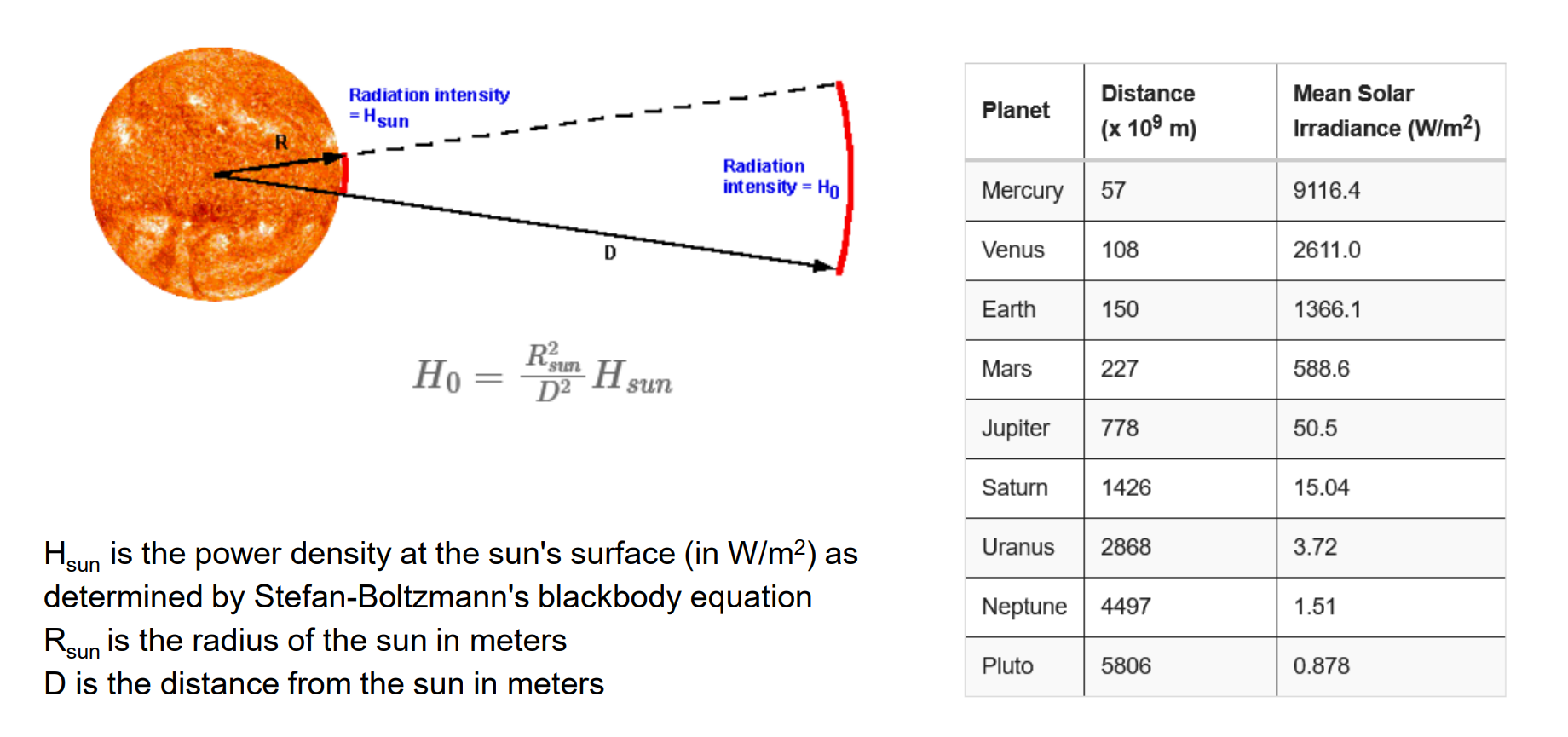
What are major parameters driving Thermal Control Design on Spacecraft
the environment in which the spacecraft has to operate
the total amount of heat dissipated on board the spacecraft
the distribution of the thermal dissipation inside the spacecraft
the temperature requirements of the various equipment items
the configuration of the spacecraft, and its reliability/verification requirements
What is the definition of Space Debris
Space debris is defined as all non-functional, artificial objects, including fragments and elements thereof, in Earth orbit or re-entering into Earth’s atmosphere. Humanmade space debris dominates over the natural meteoroid environment, except around millimetre sizes.
What is the definition of Resident Space Objects?
Resident Space Object (RSO) is a natural or artificial object that orbits another body e.g. Sun Orbiting, Earth Orbiting, Mars Orbiting etc. It is most often used to reference objects that are Earth orbiting. In the case of Earth orbiting the possible orbit classifications for an object are: Low Earth orbit (LEO), Medium Earth orbit (MEO), High Earth orbit (HEO) or Geosynchronous Earth orbit (GEO - 36 000 km above the equator)
Remark: A piece of Space Debris is a Resident Space Object (RSO), BUT Resident Space Object is not automatically a piece of Space Debris
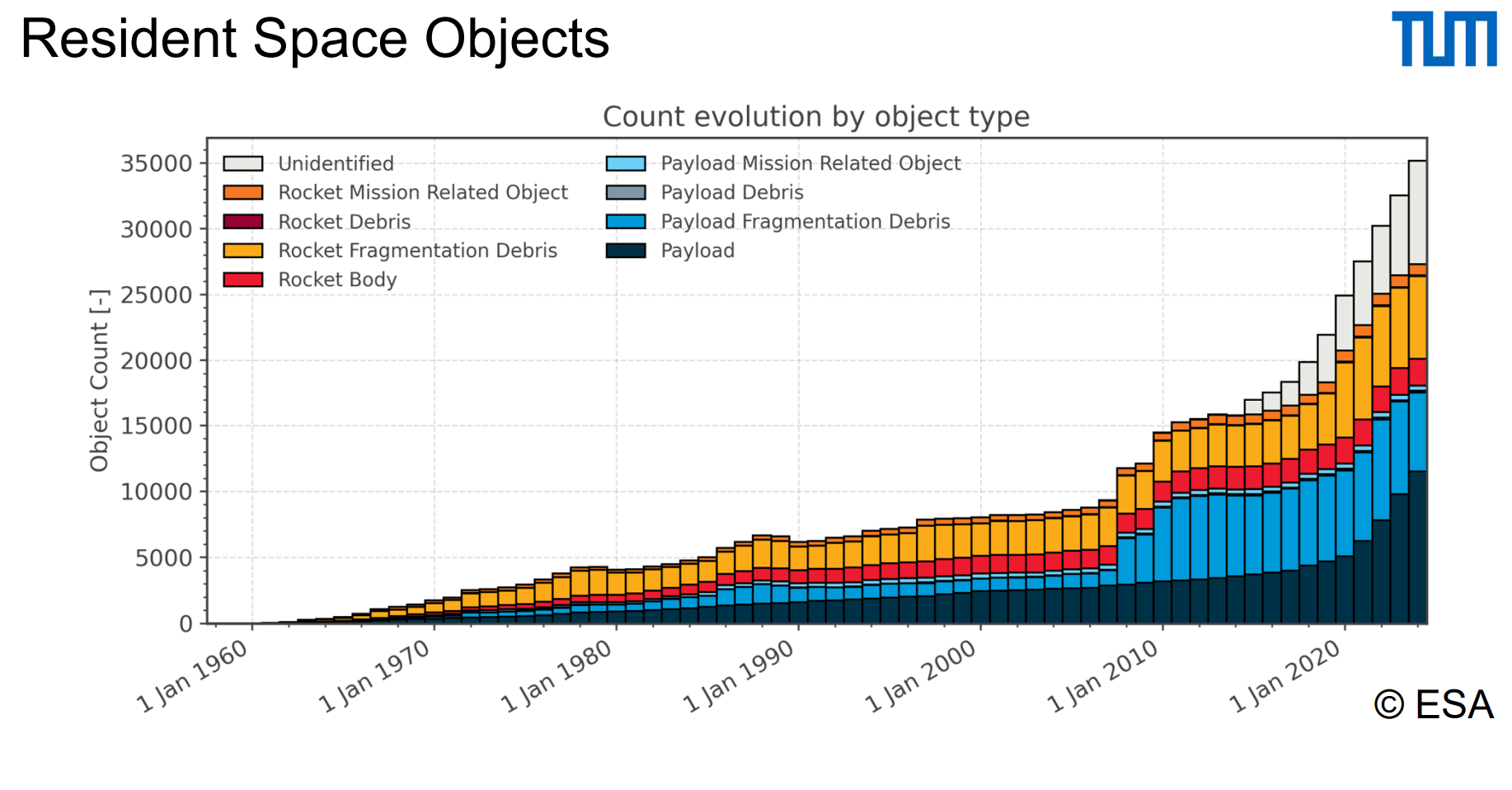
What causes space debris?
Collision events
Fragmentation events = break-ups, explosions (linked to onboard batteries or faulty propellants), collisions or anomalous events
Military tests
Separation events
Defunct satellites
What is the Kessler Syndrome and how is it linked to Number of space debris objects
The Kessler syndrome proposed by NASA scientist Donald J. Kessler in 1978, is a scenario in which the density of objects in low Earth orbit (LEO) due to space pollution is high enough that collisions between objects could cause a cascade in which each collision generates space debris that increases the likelihood of further collisions.
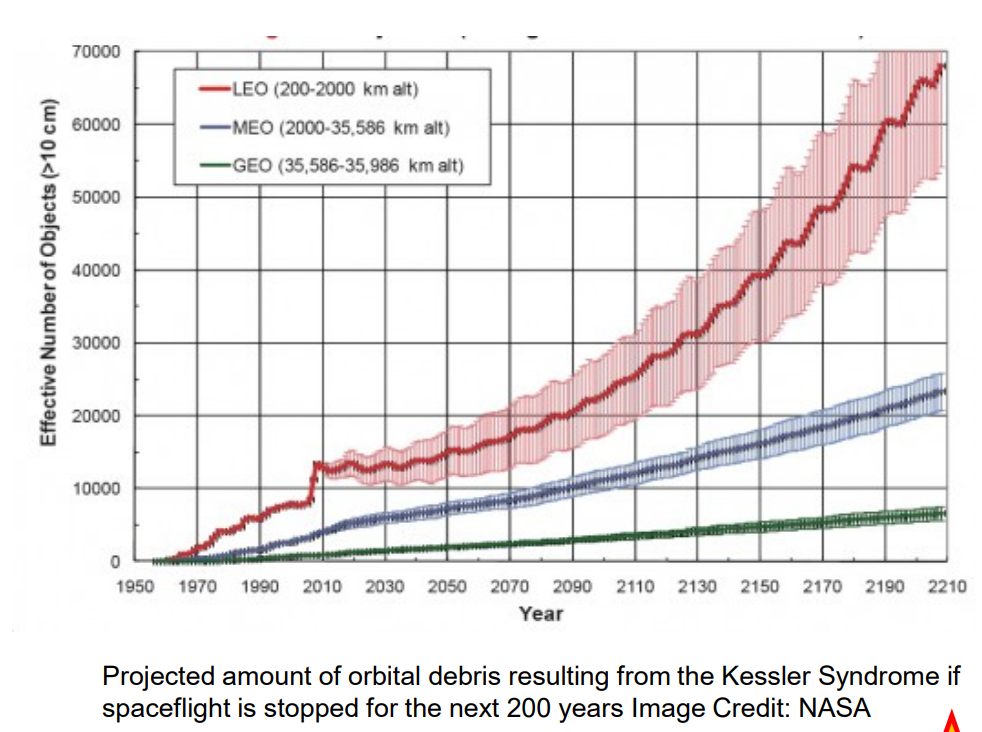
Risk due to Re-Entry
Risk due to re-entries determined through analysis of surviving fragments, their dispersion across a ground swath/foorprint, and the resulting casualty risk for the underlying ground population distribution. A 1-in-10 000 probability threshold for the casualty risk of a single uncontrolled reentry is commonly accepted
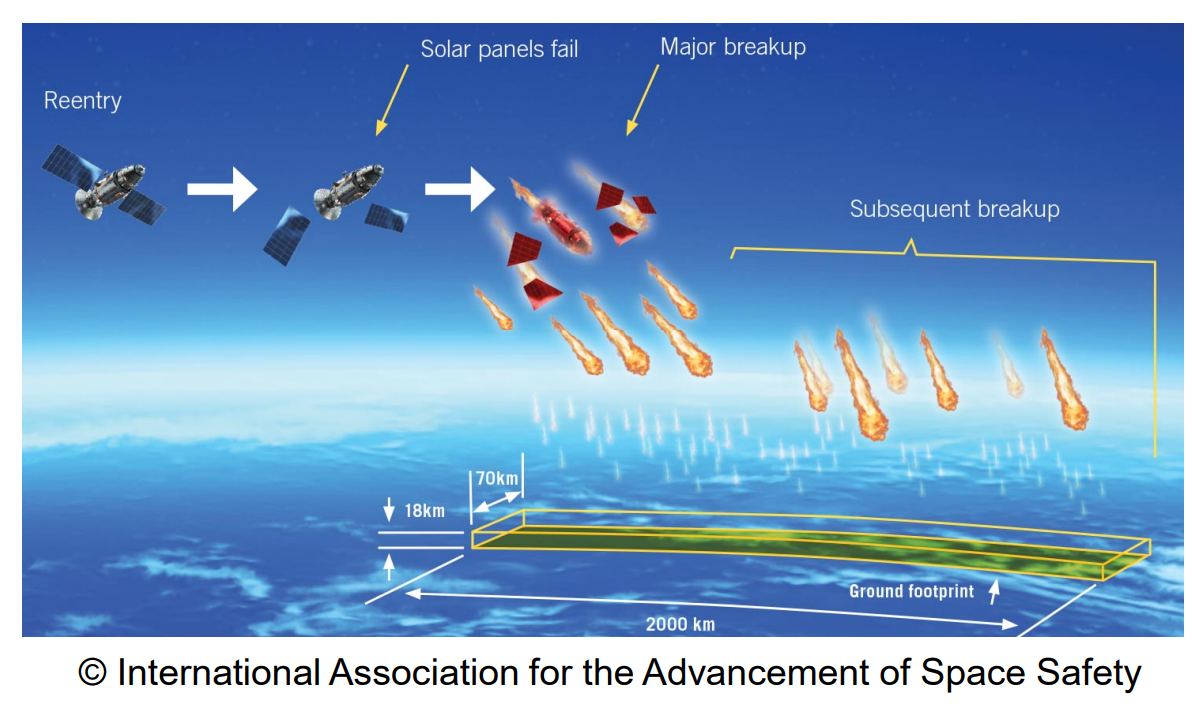
How to attack the problem of space debris collisions ?
Method - Mitigation: curtailing or preventing the creation of new debris, designing satellites to withstand impacts by small debris, and implementing operational procedures such as using orbital regimes with less debris, adopting specific spacecraft attitudes, and even manoeuvring to avoid collisions with debris
Method 2 - Remediation: mainly aims at removing existing pieces of orbital debris through removal of debris
What are Mitigation measures to prevent space debris collisions ?
Guarantee successful disposal
Improve orbital clearance
Avoid in-orbit collisions → Collision avoidance
Avoid internal break-ups: improve Satellite health monitoring & implement robust passivation techniques to prevent satellites breaking up from within
Prevent intentional release of space debris e.g. protective covers, lens caps and rocket fairings
Improve on-ground casualty risk assessment
Strategies for postmission disposal of space debris
Low Earth Orbit: Strategies for postmission deorbiting rely on forces which decelerate the satellite, thereby reducing the orbital altitude and result in a deorbiting scenario.
Strategies fall primarily into 4 categories:
Propulsion systems
Drag-augmentation devices
Electrodynamic tethers
Solar sails